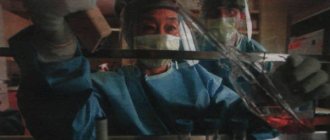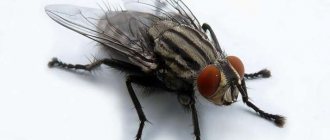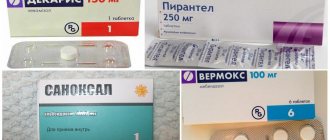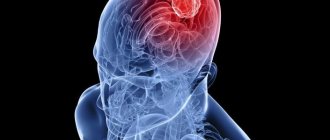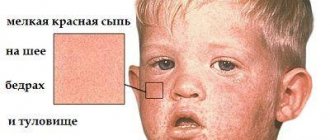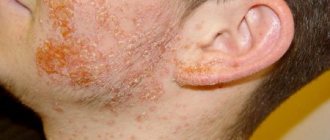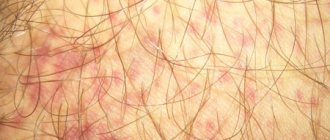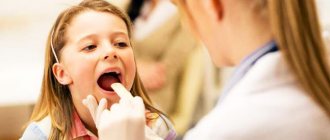There are different types of helminths, but there is also a parasite that can live not only in the organs of the gastrointestinal tract, but in several body systems at once. This type of worm includes the roundworm. Human roundworm, a helminth belonging to the type of roundworms, is the causative agent of the disease ascariasis, which occurs by migration of larvae throughout all organ systems, especially in the lungs, finally settling in the small intestine. The name of the parasite in Latin is Ascaris lumbricoides.
According to statistics, every fourth inhabitant of our planet suffers from ascariasis. The disease occurs in both children and adults. It can be difficult to detect roundworms due to their movement up the intestines. Ovohelminthoscopy is used as a diagnosis to detect worm eggs in the feces.
Pathogen, etiology of ascariasis
Ascaris
Roundworms (helminths, worms, parasitic worms) are parasitic dioecious worms of white-pink color, spindle-shaped, up to 35-40 cm in size. Female roundworms are larger in size compared to males and, under favorable conditions, can lay up to 250 eggs per day. More than 17 different species of roundworm are known, but only two species provoke the development of helminthiases - Ascaris lumbricoides, Ascaris suum
Ascariasis is a disease that is caused by helminths in adults and children after parasite eggs enter the body with food and water. After the worms have entered the host’s body, their development cycle includes several stages.
Roundworms in children and adults parasitize in various parts of the gastrointestinal tract, usually in the small intestine. They can be localized in the liver, lungs, trachea, lacrimal and bile ducts. Worms remain active in the body for a long period of time, for 9-12 months.
Life cycle of roundworm
Once in the intestines, larvae emerge from the eggs and penetrate into the thickness of the walls of the intestinal tract. After three to seven days, the larvae penetrate the portal vein and migrate throughout the body with the bloodstream, localizing in various organs.
The larvae penetrate the bronchi, upper respiratory tract, and enter the throat. An infected person swallows endoparasites, after which they again enter the intestine, where after 15-20 days the larvae turn into mature parasites capable of reproducing. Worm eggs come out of the body in feces. Ascaris eggs can only be detected in feces under a microscope.
The further process of maturation of roundworm eggs in the external environment occurs in the soil and can take from 10 to 20 days. For the development of eggs, a sufficient level of humidity and optimal temperature conditions (15-18 degrees) are required. At temperatures above 50 degrees, roundworm eggs die instantly.
Entry of the parasite into the human body
Entry of the parasite into the human body
If the larva has entered the human body, it quickly sheds its cocoon. Carriers of the parasite are insects that land on food, poorly washed dishes, as well as dirty fruits and unclean hands.
Having shed its shell, the helminth larva immediately goes through the intestines to the inferior vena cava, moves to the heart, from there it quickly enters the lungs. A person coughs, the worm ends up in the saliva, and with it it goes back to the gastrointestinal tract. There the roundworm already grows to a sexually mature state.
The process of maturation of parasites already entails a danger to human health. Due to physiological needs, they feed on blood serum, which contains a lot of oxygen. And at this time, the immature larvae produce a toxic product that is unsafe for human health; it eats away the intestinal walls.
The roundworm is growing, and the serum in the intestines is no longer enough for it. Now for the subsequent development of the parasite, it needs oxygen-rich red blood cells. The young helminth migrates through the capillaries of the intestines into the vascular network, then into the lungs (hunger dictates this path).
Causes of roundworm infection in children
An adult or a child can become infected by ingesting roundworm eggs, which can be found in soil, water, grass, food, vegetables, fruits, and the surface of various objects. Ascaris eggs are released into the external environment with the feces of people infected with ascariasis and remain viable for several months. For this reason, there is no guarantee that there are no roundworm eggs in the soil in summer cottages, garden plots, sandboxes and playgrounds.
Eggs of parasitic worms can be transported with meltwater in the spring, when transporting soil during site improvement work. They can be on banknotes, door handles, children's toys contaminated with soil, unwashed berries, fruits, vegetables, on handrails, in public transport.
Particles of soil with roundworm eggs can be brought in with shoes, on the paws, or fur of pets. Do not forget that many children like to put soil, toys contaminated with soil, and eat unwashed foods in their mouths. The reasons for the development of ascariasis may be associated with poor personal hygiene by the child.
Epithelial cover and muscles
The epithelial cells of the human roundworm form the outer multilayered cuticle, also called the hypodermis. It consists of ten layers. It is the hypodermis that produces a substance that prevents the digestion of helminths by intestinal enzymes. On a cross-section of the helminth, it looks like a thin-walled shell covering it entirely.
The peculiarity of the hypodermis is that, despite its strength, it is very flexible. This allows the roundworm to actively move. There are four ridges on the cuticle. They are located on the sides, on the back and peritoneum. The ridges contain excretory organs that have the shape of canals. Each of them is a depression separating the hypodermis and the muscular frame.
Muscle consists of longitudinal fibers. These fibers, together with the epithelium, make up the lining of the body cavity of the roundworm and form the body wall.
This feature of the integument facilitates the active movement of parasites, but the muscular frame, which differs from the frames of other roundworms, does not allow them to move in a straight line.
Symptoms of ascariasis
Ascaris in feces
Roundworms are very dangerous for both adults and children, especially younger age groups. Enough time passes from the moment of infection with roundworms until the first symptoms appear, so parasitic worms in a child’s body are diagnosed when complications develop. Signs of roundworms in children depend on the form of helminthiasis.
The first symptoms of ascariasis in children appear a week after the parasite eggs enter the body. Clinical manifestations and characteristic signs of the presence of roundworm in a child’s body are often associated with the development of respiratory diseases. Therefore, if health worsens, it is necessary to show the child to a medical specialist for diagnosis. The doctor will order tests and, based on their results, medications will be selected.
In the early stages of ascariasis in children, the following symptoms appear:
- dry cough, wheezing, difficulty breathing, asthma attacks;
- fever, general malaise;
- allergic manifestations, dermatoses (urticaria on the feet, hands).
After localization of parasites in the small intestine, disturbances in the functioning of the digestive system, pain in the lower part of the peritoneum, loss of appetite, and lack of appetite are noted. Ascariasis in children leads to deterioration in the absorption of nutrients in the intestines, decreased peristalsis, and other serious complications.
The most characteristic signs of roundworms in children:
- sudden, sharp pain, which is especially evident when palpating the abdomen;
- nausea, vomiting, sore throat, heartburn;
- frequent pain in the right hypochondrium;
- attacks of vomiting, nausea, salivation (salivation);
- lack of appetite, weight loss;
- itching in the anus;
- diarrhea followed by constipation, flatulence.
Keep an eye on your child and instill personal hygiene skills! This will protect your child from infection not only with roundworms, but also with other types of parasites
Helminth infestations are also dangerous because they lead to a decrease in the resistance of the child’s body and a weakening of the protective immune forces. Against the background of ascariasis, during the migration stage, children may develop colds, respiratory, and infectious diseases. In young patients, helminth infections lead to the development of bronchial asthma, bronchitis, and purulent recurrent stomatitis. Worms are visible in the stool, their fragments are white. A decrease in gastric secretion, ulcerative-destructive lesions, mucosal ruptures, and intestinal perforations are noted.
Ascariasis in children can manifest itself as disorders of the nervous system, and astheno-neurotic syndrome develops. Children sleep poorly, have disturbing dreams, and are capricious. Frequent headaches, dizziness, fatigue, irritability, decreased physical activity, and absent-mindedness are possible. Less commonly diagnosed are tonic muscle spasms and epileptic seizures.
When helminths enter the bile ducts, purulent cholecystitis, cholangitis, obstructive jaundice, granulomatous hepatitis, bloating, liver abscess, and progressive enteritis can develop. With severe damage to the gastrointestinal tract by roundworm larvae, intestinal obstruction and peritonitis occur. Having penetrated the appendix, roundworms cause inflammation.
After penetration into the child’s body, roundworms lead to disturbances in metabolic processes, slow down the absorption of fats, which leads to a decrease in the concentration of vitamins E, C, A. The activity of intestinal enzymes necessary for the absorption of lactose decreases. Roundworms in children and adults can lead to the development of dysbacteriosis.
Ascariasis can be asymptomatic. It also happens that roundworms in children come out on their own.
Structural features of these organisms
A unique form of life, the roundworm has pronounced sexual characteristics and genitals. The female and male have completely different structures. The method of reproduction is sexual intercourse. The male is attached to the female's body by projections. Through them, the seed enters her body.
The female has a vagina, uterus, ovaries, as well as a spermatic receptacle, oviducts and a genital opening. The male has a testis, vas deferens and a canal for ejaculation.
This interesting biological species is not only parasitic, but is also capable of maintaining a symbiotic relationship with the host organism. It benefits the human reproductive system in some cases, which was recently found in an experiment.
It is a scientifically proven fact that the reaction of the immune system to this species is very specific. In some cases, roundworms can claim the status of an active participant in the microflora, despite their impressive size, the length of the male is 25 cm, the length of the female is 45 cm.
Diagnostics
In case of any disturbances in the functioning of the gastrointestinal tract, obstructive lesions of the respiratory system, in order to prevent the development of complications and prescribe timely treatment, parents should show the child to a pediatrician for examination and diagnosis. You should not treat helminthiasis yourself, using exclusively alternative methods of medicine. Folk remedies will not help get rid of worms and may even cause complications.
Diagnosis of ascariasis in children consists of a comprehensive examination and study of clinical and epidemiological data. To determine helminthic infestation, it is necessary to undergo laboratory tests. If ascariasis is in the first stage of development, the patient’s sputum is examined, an X-ray of the lungs is performed, and serological blood tests are prescribed, which make it possible to detect invasion in the early stages.
Since roundworm eggs are contained in feces (intestinal stage), laboratory tests of fecal matter are required (ovoscopic diagnostic method). If necessary, doctors take several stool samples obtained at different periods of time. Additionally, an X-ray of the intestine with contrast and an ultrasound of the peritoneum are prescribed.
Digestion
The digestive system of the human roundworm consists of a hollow tube that forms an intestine with four sections. Two of them are formed from ectoderm and two are of endodermal origin.
The intestine is a closed and tortuous cavity, which is located in the central part and passes through the entire body of the helminth. All nutrients are absorbed in the midgut.
Such a simple anatomy of the digestive system of the human roundworm is due to the fact that the parasite is constantly surrounded by food mass processed by the human intestine. This greatly simplifies the feeding mechanism for him.
The process of absorption of food occurs through the opening of the mouth, surrounded by the so-called lips.
Treatment of ascariasis in children
Roundworms are very dangerous for the child’s body, therefore, after diagnosis, taking into account the degree, phase of helminthic infestation, intensity of symptoms, effective treatment, treatment methods, dosage of drugs, the doctor prescribes.
During the migratory stage of ascariasis, children and adults are treated with antiparasitic medications. Patients are prescribed anthelmintic tablets, suspensions, and broad-spectrum antinematous agents: Thiabendazole, Mebendazole (Vermox), Levamisole, Albendazole.
If the symptoms of ascariasis in children are manifested by damage to the respiratory tract, young patients are prescribed symptomatic, broncholeptic, and corticosteroid drugs.
When diagnosing the intestinal stage of ascariasis in a child, according to the doctor’s instructions, it can be cured with: Decaris, Piperazine, Mebendazole, Vormil. Before giving medicine to your child, carefully read the instructions for use, follow the treatment regimen and dosage!
After the treatment course, to restore normal microflora, enterosorbents (Polysorb, Polyphepan, white coal), enzyme tablets and preparations containing beneficial lactobacilli, the action of which is aimed at restoring beneficial intestinal microflora, can be additionally prescribed. In severe forms of ascariasis, children are prescribed antiallergic pills, medications to boost immunity, and multivitamins.
If treatment of ascariasis in children is carried out with anthelmintic tablets and medications, it is necessary to carefully monitor the child’s condition. If vomiting or severe abdominal pain occurs, contact your doctor immediately. After treatment, it is necessary to re-test for the presence of roundworm eggs in the stool. You may need an additional course to finally cure helminthiasis and get rid of roundworms.
The unexpected discovery was puzzling at first
American researcher Aron Blackwell and his colleagues studied the effect of different types of parasites on the body of Bolivian women. It turned out that roundworms increase the chance of conception and increase the chances of bearing a child. It’s all due to the body’s reaction, the production of immune cells of the appropriate type.
The results of the study were made public, published in the journal Science, and became public knowledge.
How did this unusual experiment take place?
Aron Blackwell and other scientists observed the Chimane tribe. Some residents were found to be infected with roundworms and other worms.
Women with infestations of various types of parasites experienced weight loss, decreased appetite, and a general deterioration in health, including reproductive dysfunction. But in the event that an infestation with roundworms was diagnosed, there were no problems with conception, gestation and childbirth.
The time the body needed to recover from pregnancy was reduced. Of course, this pattern attracted the attention of researchers, although it was possible not to pay attention to it. But the correlation was present, the facts had to be interpreted.
Nine years of observation and analysis
Initially, scientists associated problems with conception that arose in women in whose bodies helminths were found with hemoglobin levels. But later it was proven that helminths are able to influence the production of T-helper cells of the first and second types.
During pregnancy, a woman's balance naturally changes. There are fewer T-helper cells of the first type entering the blood, and more of the second type. This immune reaction protects the embryo and the mother's body.
A woman’s body reacts to roundworm in approximately the same way as to pregnancy: the level of T-helper type 1 in the blood decreases, the level of T-helper type 2 increases.
A total of 986 women took part in the experiment. And although the information obtained by scientists is very interesting, it is still unknown what significance they have for science in general and medicine in particular, and whether they will find practical application.
Folk remedies for the treatment of roundworms in children
Garlic for the prevention of worms in children
To enhance the therapeutic effect, when treating roundworms in children, it is permissible to use traditional medicine for additional therapy. But you need to take into account that it is impossible to cure ascariasis in children and remove worms from the child’s body using phytotherapeutic techniques. Folk remedies are used in combination with the main treatment, after consulting with your doctor.
Garlic, pumpkin seeds, and onions are considered effective folk remedies against worms. Walnuts, strawberries, lovage, pomegranate, carrots, celandine juice, St. John's wort, and calendula have an anthelmintic effect. Used for preparing decoctions, tinctures, enemas.
Roundworms do not like hot, spicy foods. But you need to remember that these products will not kill worms, but will only increase their migration, which can be very dangerous to health.
When treating helminthiasis with folk remedies, you need to be extremely careful. Thus, garlic, which should force the roundworm to exit through the anus, can provoke its migration to the organs of the respiratory tract, provoke its movement through the mouth and nose, which can cause suffocation.
Nervous system
Its structure is also primitive. The nervous system of the parasite consists of one ganglion node represented by a peripharyngeal ring. It is located in the head part of the helminth. Dorsal and abdominal nerve bundles extend from it along the body. Their functions include organizing muscular control during movement and the presence of sensitivity.
Roundworms have practically no receptors. There are only papillomas, which are tactile bumps. They are located near the oral cavity.
Parasites also have no other sensitive formations. They have atrophied because the digestive environment of the human intestine does not contain any physical irritants.
Prevention
Prevention of ascariasis in children involves maintaining personal hygiene. After a walk, you need to make sure that the child washes his hands before eating, does not eat unwashed berries and vegetables, and does not put dirty fingers or soil-stained toys into his mouth.
Since roundworm eggs are sensitive to sunlight, it is recommended to constantly loosen the soil in summer cottages and garden plots, and promptly change the sand in sandboxes. Children should not be allowed to play in playground sandboxes contaminated with animal feces.
In order to detect helminthic infestation in a timely manner, it is recommended to undergo timely stool tests for the presence of roundworm eggs and general blood tests for biochemical studies. If you notice signs of deterioration in health, immediately take your child to the pediatrician. When diagnosing ascariasis in children, do not self-medicate with folk remedies. Tablets, antiparasitic medicines, and folk remedies should only be prescribed to children by the attending physician!
Respiratory system
Worms live in an anaerobic environment. Where there is no free oxygen. Therefore, they do not need the respiratory organs present in individuals that are more developed. Their lack of a respiratory system is the result of a natural adaptation, since there is no air in the human intestines.
Metabolic processes occur due to cellular respiration. It is carried out as a result of glycolysis in the cell cytoplasm. This type of cellular respiration, in which there is no oxygen, is used by anaerobic organisms.
Fertilized eggs
They are characterized by large sizes - up to 50-65 microns, ovoid or spherical shape. The outer shell has a lumpy, translucent structure, while the inner shell is smooth and elastic. They protect the spherical granular blastomere from destructive external influences.
On a note!
In feces, eggs are translucent, making them difficult to detect and identify. When it gets into the soil, the shell loses its transparency and acquires a more dense structure.
Kinds
The Nematoda class includes more than 24 thousand species of parasitic varieties of roundworms. Scientists have developed a special table, which includes the most common types of parasites living in the human body. Among the roundworms, the most famous are roundworms and pinworms. The helminths Guinea worm and hookworm often infect people, which are slightly less common than pinworms and roundworms. Pinworm worms are also a type of roundworm, but they differ in that they exist in the human body for a long time without causing obvious signs of disease.


